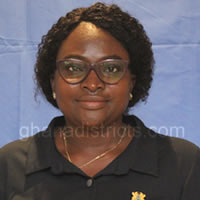Literacy and Education
Literacy
Table 3.8 shows the population 11 years and older by sex, age and literacy status with high proportion (60.4) who can read and write English and Ghanaian language. The data indicates the age cohort 11-14 had the highest proportion of 40.3 percent literate persons in English only. In addition 8.7 percent of them are literate in Ghanaian language only and 50.6 percent of them are literate in English and Ghanaian language. There are high proportions of literate male (85.3%) than females (70.0%) in the district with 41.3 percent females who are literate in English only than 39.3 percent males within age cohort 11-14.
Among the some age cohort, 52.4 percent females and 48.6 percent females are literate in English and Ghanaian language only. data further shows that a higher proportion of the population in all the age groups can read write and understand English and Ghanaian language more than in English only and Ghanaian language only. Those who can read, write, understand English, French and Ghanaian language in the district account for less than one percent in all the age groups for both sexes.
Education
The ability to read and write is an essential component for societal development. Hence education has become a process of acquiring knowledge, skills, values and attributes that develop the individual’s capabilities for the mutual benefit of society. Figure 3.2 shows that out of the total of 94,682 persons three years and older in the district, 19.4 percent has never been to school, 44.3 percent is in school now and 36.3 percent was in school in the past.attendance is relatively tilted to the advantage of females with regards to those now in school (25.0%) to (13.6%) for males.
Although appreciable number of both male and females in the district have been to school, (47.8% now in school, 41.0% in school in the past for males and 38.6% now in school and 34.1% in school in the past for females) those are currently attending school, the table shows that 48.8 percent are in primary school, 10.7 percent in kindergarten, 18.6 percent are in JSS/JHS and 1.1 percent in the tertiary. There are relatively more females (49.5%) than males (48.3%) with primary level of education and kindergarten (20.5%) for females and 18.95 percent for males.
There is relatively higher proportion of males (19.4%) with JSS/JHS level of education than females (17. 6%). With respect to former attendance of school, there is 35.1 percent with JSS/JHS level of education, 31.5 percent with middle school level of education, 18.5 percent primary level of education, 6.9 percent SHS level and 2.5 tertiary level of education. With the exception of JSS /JHS level of education where females (39%) are more than males with 31.4 percent, males have higher proportion of level of education than females of those who have attended school in the past.
Date Created : 11/15/2017 3:04:53 AM





 facebook
facebook twitter
twitter Youtube
Youtube TOLL FREE 0800 430 430
TOLL FREE 0800 430 430 +233 593 831 280
+233 593 831 280 GPS: GE-231-4383
GPS: GE-231-4383 info@ghanadistricts.com
info@ghanadistricts.com Box GP1044, Accra, Ghana
Box GP1044, Accra, Ghana